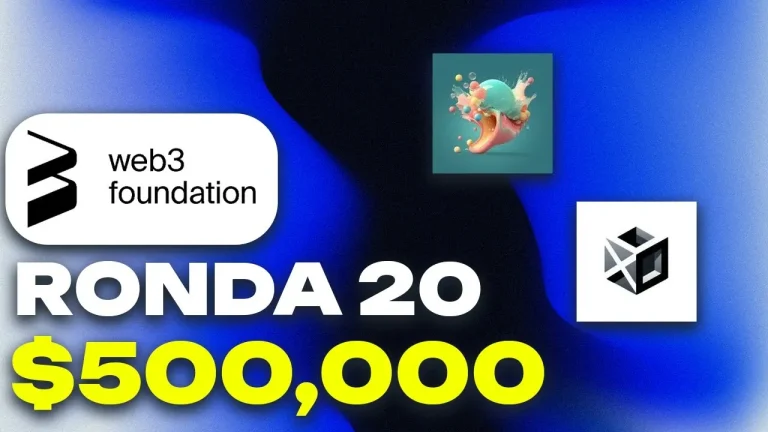Central to Polkadot’s operation is the block production mechanism, which is integral to the network’s consensus and security. One of the key innovations in this area is the SAFROLE protocol, formerly known as SASSAFRAS. SAFROLE is a SNARK-based block production algorithm that introduces advanced cryptographic methods to enhance anonymity, efficiency, and security in Polkadot’s block production process.
Understanding SAFROLE and Its Role in Polkadot
SAFROLE builds upon the existing block production protocol known as BABE (Blind Assignment for Blockchain Extension), which is part of Polkadot’s hybrid consensus model. The primary function of SAFROLE is to ensure anonymous and secure validator selection for block production. This is crucial because validators play a critical role in maintaining the integrity of the blockchain by producing and validating new blocks.
The anonymity provided by SAFROLE is achieved through zk-SNARKs (Zero-Knowledge Succinct Non-Interactive Argument of Knowledge) and a novel cryptographic technique called RingVRF (Verifiable Random Function). These technologies work together to ensure that the identity of the validator responsible for a block is concealed, which significantly reduces the risk of targeted attacks. Additionally, SAFROLE aims to ensure near fork-free, constant-time block production, enhancing the overall stability and security of the network.
How SAFROLE Enhances Validator Anonymity
One of the core innovations in SAFROLE is its approach to validator anonymity. In traditional blockchains, validators or miners are known entities, which can make them targets for attacks. SAFROLE changes this by using zk-SNARKs in conjunction with RingVRF to keep the identities of validators anonymous. When a validator is selected to produce a block, they submit a cryptographic proof that they are eligible to do so, without revealing their identity. This proof is verified by the network, ensuring that only legitimate validators participate in block production.
The RingVRF further enhances this anonymity by allowing validators to prove they are part of an eligible group without disclosing which specific validator they are. This method prevents any pre-assignment of block production slots to malicious actors outside of the active validator set, significantly increasing the security of the block production process.
Reducing Forks in the Blockchain
Forks in a blockchain occur when two or more blocks are produced simultaneously, leading to a split in the blockchain’s history. This can create security vulnerabilities and reduce the efficiency of the network. SAFROLE addresses this by implementing a mechanism that limits the number of valid block authors within a given time slot, which is crucial for maintaining a single chain of blocks. By ensuring that only one block can be produced in each time slot, SAFROLE reduces the likelihood of forks, contributing to a more stable and secure blockchain.
This mechanism operates by pre-selecting a group of validators, among whom only one can be the valid author for a block at a given time. This system not only minimizes the possibility of forks but also ensures that the block production process remains efficient and predictable.
How SAFROLE Simplifies Block Production
One of the most significant improvements SAFROLE brings to JAM is the simplification of block production. SASSAFRAS, while effective, was a more complex algorithm requiring higher computational resources and introducing more potential points of failure. SAFROLE addresses these issues through the following key features:
- Anonymity in Validator Selection: By using zkSNARKs, SAFROLE allows validators to prove their eligibility to produce a block without revealing their identity. This not only preserves the privacy of validators but also reduces the risk of targeted attacks or manipulations within the network.
- Fork Prevention: SAFROLE minimizes the possibility of forks by limiting the chance of multiple validators producing blocks simultaneously for the same parent block. It achieves this by ensuring that only a single key-holder from a pre-specified group of validators can produce a block within a given six-second timeslot. This mechanism significantly reduces the likelihood of chain splits, ensuring a more stable and reliable blockchain.
- Constant Time Block Production: Unlike its predecessor, SAFROLE is designed to produce blocks in nearly constant time, regardless of network conditions. This is a crucial feature for maintaining the efficiency and speed of the JAM network, particularly as it scales to accommodate more users and transactions.
- Reduced Computational Overhead: SAFROLE’s streamlined architecture reduces the computational load on validators, making it more accessible and less resource-intensive to participate in the block production process. This encourages greater decentralization and participation within the network.
Integration of SAFROLE into JAM’s Architecture
SAFROLE is not just an isolated improvement but a critical component of JAM’s overall architecture. The design principles behind SAFROLE align with JAM’s goals of providing a scalable, private, and secure blockchain environment for decentralized applications.
- Scalability: By simplifying the block production process and reducing the computational requirements for validators, SAFROLE contributes to JAM’s scalability. As the network grows, SAFROLE’s efficiency ensures that block production remains fast and reliable, even under increased load.
- Privacy: The integration of zkSNARKs within SAFROLE aligns with JAM’s focus on privacy. Validators can participate in block production without exposing their identities, reducing the risk of privacy breaches and enhancing the overall security of the network.
- Security: SAFROLE’s fork prevention mechanism and its ability to produce blocks in constant time make JAM’s blockchain more resilient to attacks and disruptions. This security is further bolstered by the anonymous nature of validator selection, making it difficult for malicious actors to target specific validators.
Technical Deep Dive: How SAFROLE Works
To fully appreciate the technical sophistication of SAFROLE, it’s important to explore its underlying mechanisms in greater detail. At the heart of SAFROLE is the combination of zkSNARKs and RingVRFs, which together create a secure and anonymous validator selection process.
- zkSNARKs in Validator Selection: zkSNARKs enable validators to prove that they are part of the eligible group for block production without revealing their identity. This is crucial for maintaining the anonymity of validators, as it prevents adversaries from knowing which validators are participating in a given timeslot. The zkSNARK proof is submitted along with the block, ensuring that the validator’s identity remains hidden while still allowing the network to verify their eligibility.
- RingVRF: The Ring Verifiable Random Function (RingVRF) is used to randomly select validators from the eligible group. This randomness is a critical component of the block production process, as it ensures that the selection of validators is unpredictable and resistant to manipulation. The combination of zkSNARKs and RingVRF ensures that validators are selected fairly and anonymously, without compromising the integrity of the network.
- Fork Prevention Mechanism: SAFROLE’s fork prevention mechanism is designed to address one of the most significant challenges in blockchain consensus—preventing multiple blocks from being produced for the same parent block. By limiting the possibility of multiple valid authors per timeslot, SAFROLE reduces the risk of chain splits and ensures that the network remains synchronized and secure. This is achieved by pre-selecting a single key-holder from a group of validators, ensuring that only one block can be produced in a given timeslot.
Conclusion
SAFROLE is going to be a significant advancement in the block production mechanisms used by Polkadot. By integrating advanced cryptographic techniques like zk-SNARKs and RingVRF, it provides a high level of anonymity for validators, reduces the risk of targeted attacks, and minimizes the chances of forks in the blockchain. These features make SAFROLE a crucial component in ensuring the security, efficiency, and scalability of the Polkadot network, continuing its evolution as a leading multi-chain platform in the blockchain ecosystem.








